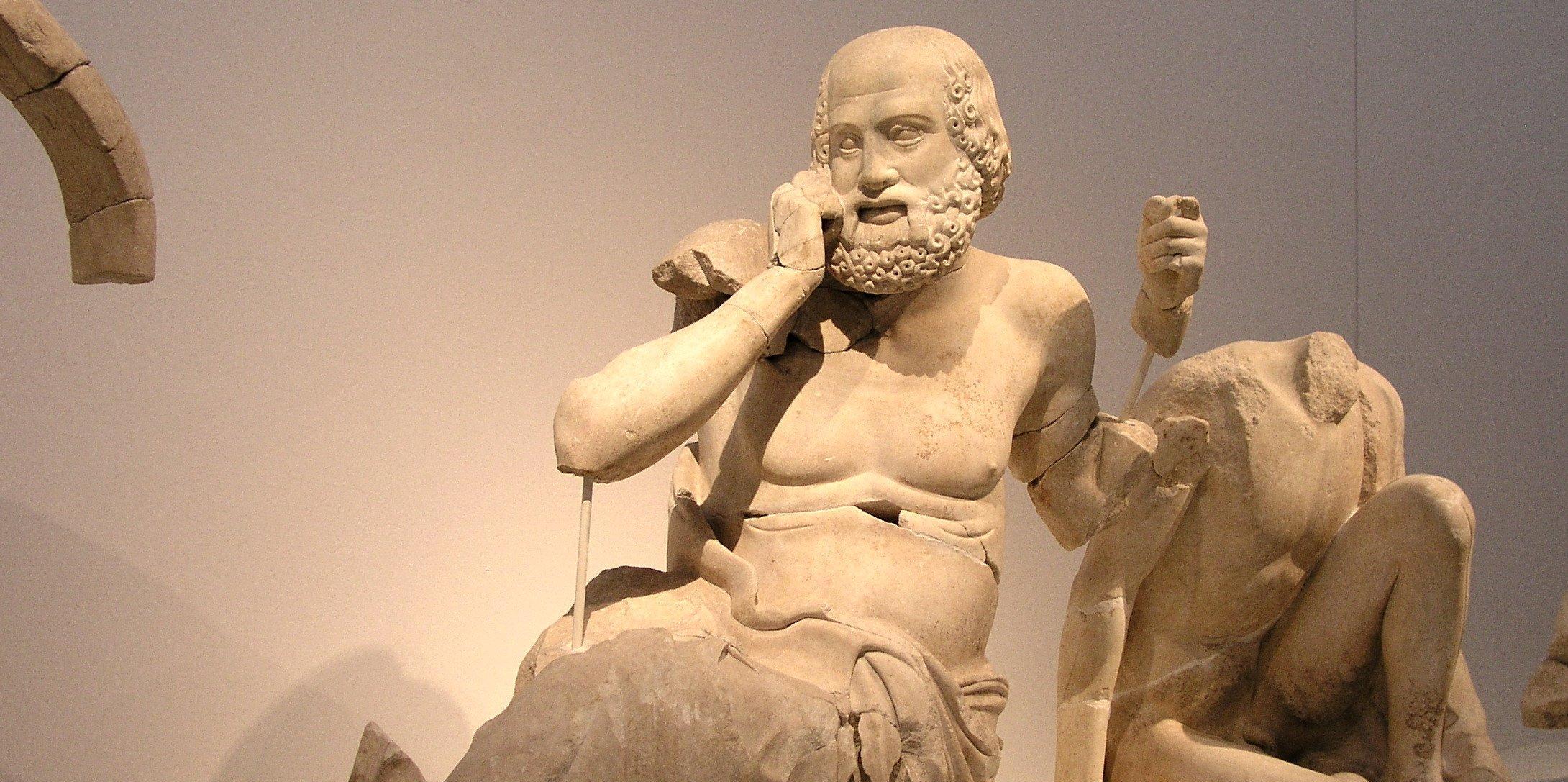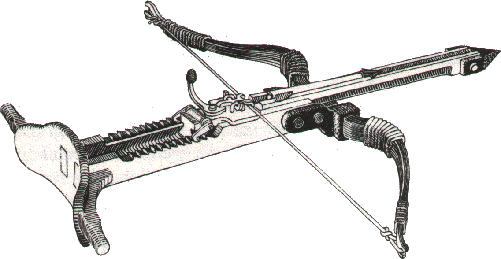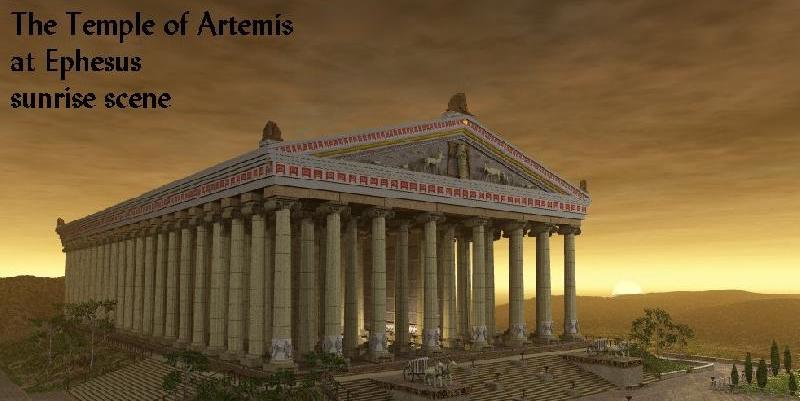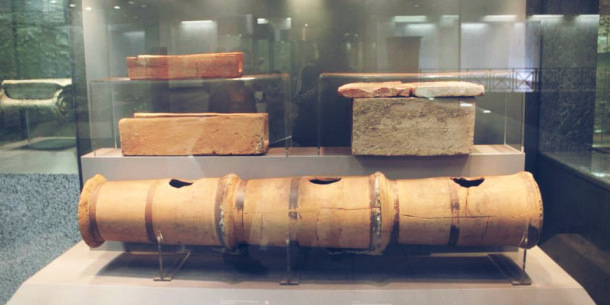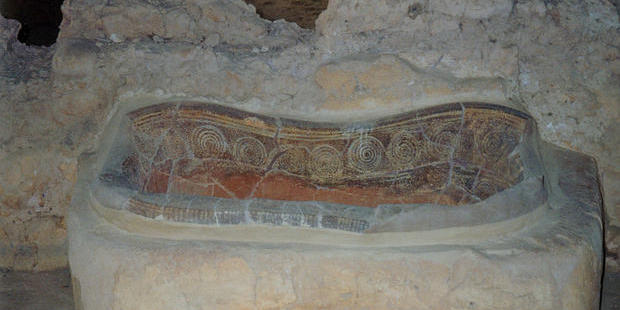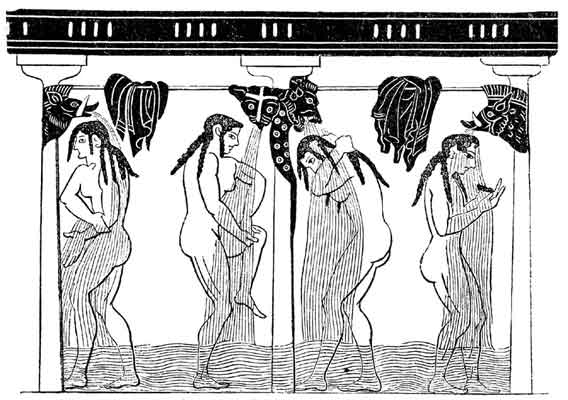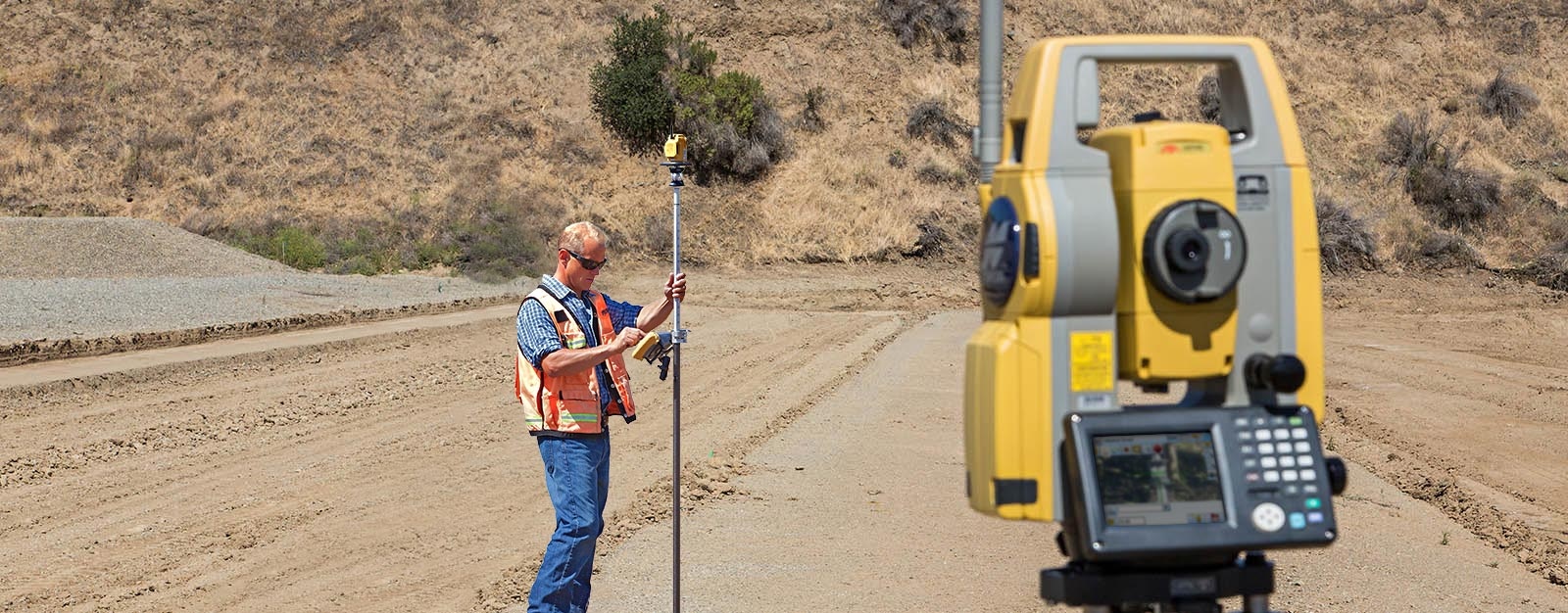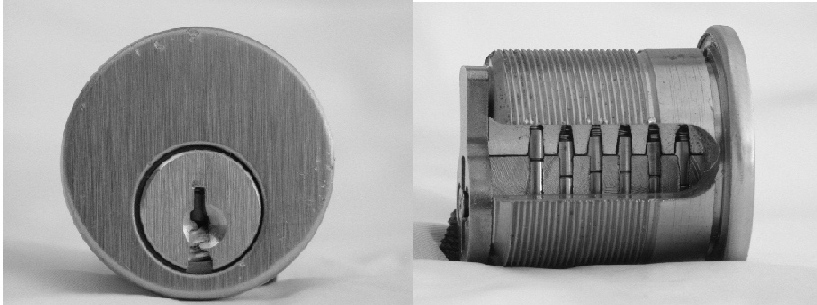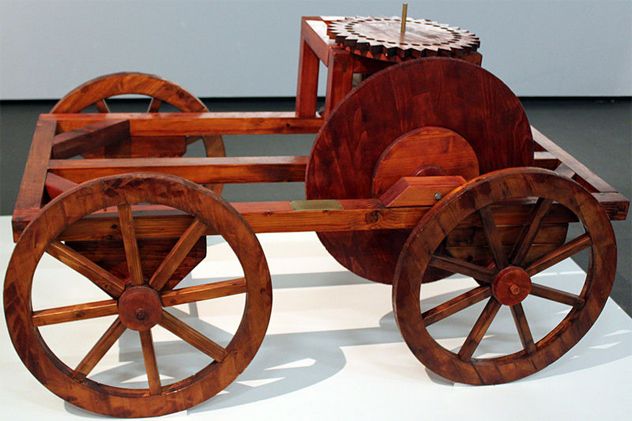If you’ve ever heard that the modern day cellphone is an adaptation of Greek technology, you were lied to. The cell phone is actually pretty modern. There are, however, many technologies we’ve been enjoying for far longer than the last century. We’ve had many handy tools since the BCs. In case you’ve forgotten as much, BC is a really, really, really long time ago. Some of these technologies were created by Greeks under occupation from the Romans, but they are Greek inventions nonetheless. While a few of these will strike you as obvious, you’re not going to believe a few of them. That said, the cellphone is not on this list. Promise.
These are organized starting with technologies used in this order: for war, at sea, in the home, and those which improve our lifestyles.
Catapult
The catapult predates rockets. Can you imagine if we hadn’t upgraded that technology? NASA Catapults doesn’t sound as sexy, but it could have been that. Before the invention of the rocket, we needed to send large objects hurtling through space. Crossbows were not going to fit the bill, so sometime prior to 420 BC, the Greeks invented the catapult. Until the invention of the canon, this would be the only way we could throw big things through the air. We don’t generally use these for war anymore.
Crossbow
Crossbows are the stopover point between the upright bow and the rifle. These first showed up in the 5th century BC, in the form of something call the gastaphetes. The word translates in modern English to “belly-releaser,” a reference to how users cocked and unloaded the device. Crossbows allowed arrows to travel far, fast and accurately. You can be sure, they were as deadly then as they are today. Of course, today’s crossbows are only used in hunting. Next time you go after a ten-point buck, you can tell your hunting friends, “we’ve been hunting like this since the Ancient Greeks.” They’ll be impressed.
Gears
Gears, in case that word doesn’t conjure an image, are those wheels with teeth around the outer edge. They aren’t specifically a technology of war, but they have played a major role in mobilizing armies so we’re bunching them with war tech. in everyday technology we see them in watches, clocks, and cars. The gear is one of the main moving parts of most machinery. The credit to the Ancient Greeks is more for their adaptation of previous technology than for a wholly new invention. In the 5th century BC, Greeks took previously engineered gears to the next level, applying them in more ways than ever before. Of note, the Chinese were also developing gears in the 4th century BC.
Anchor
Fact: If you don’t have wings, you can’t fly, but if you don’t have an anchor you might float away. Nothing on this list says “sea,” like the anchor, so we’ll start with this one for seafaring technology. Thankfully, the Greeks thought of that. The Greeks were once known for their nautical efforts. Their ships were the first to figure out how to take an anchor with them. The first anchors looked much like what we think of when someone says they have a tattoo of an anchor.
Cartography (Maps)
In modern times there was a blip where people bought TomTom or Garmin GPS devices for their dashboards. Then Smartphones got smarter, taking over the job. We owe all of this to the Ancient Greeks. It’s true. Anaximander was a pre-Socratic Greek philosopher who lived in Miletus, a city of Ionia (in modern-day Turkey). He created the fundamentals baked into modern day GPS, which were early versions of longitude and latitude. From there, it wasn’t until TomTom that we saw real changes made to the way we map things. It’s true, prior to Anaximander, we had maps, but not cartography like the Greeks were using.
Crane
Why put the crane with the sea technology? Have you ever been to a large port before? The cranes of the Ancient Greeks were not exactly the monster cranes we see towering over us today, Greek cranes allowed smaller labor forces to lift weight. There was no steel or stone involved, but a simple wood and rope system, perched over the edge of the construction. Weight moved by the labor of animals, like donkeys or by human labor. Unions didn’t exist until the Romans. (There’s a joke in there somewhere about Jimmy Hoffa and a time machine… You can put it together.)
Lighthouse
While today’s lighthouses have gone the way of the clocktower, lighthouses traditionally offered guidance from the land. They served as beacons from which to position ships for entry to port or to warn them of dangerous shoreline in otherwise foggy places. In the 3rd century BC, the Greeks build the Lighthouse of Alexandria. It took twelve years to complete, but would be the template from which all future lighthouses were built. For centuries it was the tallest human-made structure. People abandoned it after several earthquakes reduced it to ruins.
Automatic Doors
Nothing says home like a front door and a garage. The next time you open your garage door, you can say, “Thank the Greeks this thing works.” Of course, the Ancient Greek design didn’t use radio signals and chains. Leveraging steam power, in the 1st century AD, Heron of Alexandria created plans for automatic doors. He was a Greek scholar, but this was Roman-ruled Egypt. It’s confusing, sure, but the Greeks get the credit for this one.
Cement
Concrete sits only behind water as the most used substance on the planet. It’s estimated (as of 2006) that humans manufacture about 7.5 billion cubic meters of concrete each year. The Romans may have perfected recipe, but the Greeks started mixing clay with Limestone around 100 BC. This is the basic makeup of today’s concrete. Did you know that we only recently figured out how to make concrete as strong as the Romans? True story. We can thank the Greeks for getting the ball rolling, but who the heck lost the recipe for the best version of it?
Central Heating
The Ancient Greeks didn’t have central air-conditioning, but they did have heat. Around 350 BC the Great Temple of Ephesus was heated by circulated air from flues in the floor. This is a far cry from your modern central heating and conditioning system, but it still beats lighting fires all over the place. Of course, it probably meant the air was smokey too, so we discovered other ways to heat our homes.
Plumbing
While the Romans were famous for their plumbing and roads, the Greeks predate the Roman efforts. Of course, there were also similar developments in Asia, but for Western culture, we owe our plumbing technology to the Greeks. Pipes didn’t come into play until the Romans were in charge, but the Greeks were moving water in the 5th century BC. It was their technology that gave rise the great Roman aqueducts.
Sinks
Albeit sinks are the technology we keep reinventing, thanks to the modern housing market, the basic concept is nothing new. Water comes from a source. It’s captured in a bowl. The Greeks, surprise, did it first. They valued a good bath as much as anybody, so around the 5th century BC, the Greeks captured water. They were the first to adapt this technology into a smaller version not much different than modern sinks. Apparently, clean hands at the dinner table have been a mandate much longer than one might assume.
Showers
Today’s showers are an exercise in indulgence. Our showers have become places of refuge, with more than one shower head, a hose and maybe a steamer. Outside of the hosed shower nozzle, the Greeks enjoyed all of these technologies. Because they constructed Western culture’s first aqueducts, they figured out that an efficient system could work dropping water on one’s head. The crafted large communal showers, where folks could bath not much differently than the way you shower up at your local fitness center.
Surveying Tools
Surveying is a trade, whereby the trade-person applies surveying science to determine three-dimensional positions on the land. If you live outside the city, you’ve seen the surveyor come through to determine where the property lines end or some such information. Modern city planning mandates we pay attention to these details to avoid lawsuits or worse, building on land that is not solid. Greeks developed tools to test the ground for solidness, measure the grade, and gather other important information before building.
Water Mill
Water mills still power homes and cities throughout the world. Of course, today’s mills are more often realized as dams, but they employ the same concept. The goal is to harness water power to propel something else. Greeks designed the first versions, written in a book called Pneumatics.
Wheelbarrow
If you’ve ever had the pleasure of manual labor, gardening or moving concrete, then you’ve operated a wheelbarrow. They’re fairly nimble over a variety of surfaces, but with one wheel, they’re also volatile. They tip over. Despite this, they’ve been around since the 400s BC, designed and used by the Greeks. They found that a one-wheeled cart worked more efficiently around construction sites.
Alarm Clock
Our last grouping of technology is that which changes our lifestyles. Nothing says lifestyle quite like when we wake up. You thank the Ancient Greeks for your alarm clock. This is unbelievable sounding, but true. In the 3rd century BC, a man named Ctesibius fitted his water clock (called a clepsydra) with an alarm system. His system dropped pebbles on a gong or sounded trumpets. That’s right. The first alarm clock came with different tone options. The only problem? The alarm clock was very cumbersome. Thankfully, we’ve improved this tech. That said, a few trumpet blasts may work better than most of today’s alarms.
Clock Tower
The first was built around 50 BC. It was the Tower of the Winds, built in Athens. It featured eight sundials. Today’s clock towers have more modern applications of technology, but despite the landslide of personal time devices, we still built clock towers. Some of us still use them to mind our schedule. They also add a touch of old-timey austerity to municipal architecture.
Coins
Albeit, many of us wish this technology would go the way of the dodo, coins are a fact of life. We don’t know for certain when or where in Greek culture the first coins appeared, but it was somewhere around 615 BC in Athens. The first coins were hand-made, but don’t look so different from what we use today. We still see many of the same elements; heads of politicians, grains, and animals. It’s ironic that, as we move more into this digital age with digital money, the most prominent form of crypto cash is “Bitcoin.” The Greeks would be proud.
Locks
Today’s locking technology in extensive, but the most simple padlocks we use are not much different than what we’ve used for thousands of years. Debated, is who exactly gets the credit for modern locks. Was it the Greeks, the Egyptians or the Romans? We know all three used locks, but the Greeks get the nod by most historians. Invented by the Greeks around 5th century BC, tumbler locks were a departure from less technical versions of locks. They made improvements on the Egyptians versions. The Romans went on to improve the Greek tumbler lock.
Odometer
Not to be confused with the speedometer, the odometer measures how far you’ve come. The Greeks made the first of them. Around the 3rd century BC, in Alexandria, Greek engineers created a device to measure the distance traveled by a carriage. This had reciprocal effects on how humans designed roads and cities. From this, they knew the accurate distance between points of interest. They were then able to mark those distances with milestones. Perhaps we could also credit the Greeks with mile markers, considering previous versions would have been inaccurate.
Steam Engines
At one time, steam engines were in development right alongside gasoline and electric versions. Eventually, the steam engine lost out to the fuel combustion engine, but we still use steam to power some machines. We still power things with hot, moist air. The Greeks, however, weren’t powering locomotives. Heron of Alexandria designed a children’s toy, powered by steam. It didn’t do much but spin around. Despite this, it was the foundation for future steam technology.
Thermometer
Today’s digital body thermometers put the smack down on the red liquid glass tubes that tortured children only a decades ago. They’re fast, efficient, and painless. The first thermometers developed by the greeks were hardly small enough to fit under your tongue, but they performed the same basic function. Along with many other inventions, Heron of Alexandra takes credit for designing the first thermometer for medicine. It would be another 1500 years before Galileo Galilei would invent the modern thermometer.
Umbrella
The next time you crack a cold one with your friends under a lovely umbrella, look up and thank the Greeks for all the shade. Although our modern umbrellas probably owe more the Chinese, the Greeks fashioned similar technology. Made from wood or large bones, Greek versions were assembled to do the exact same thing: create shade.
Vending Machines
There are times when finding a vending machine with ice-cold soda is like finding a mirage in the desert. You can think of no better discovery if you’re desperate enough. The Greeks understood the value for thirst satiation. Heron of Alexandria, a familiar name to this list, created a coin-operated water dispenser. No cans, no bottles, the technology worked by dropping in a coin. This would open a valve, releasing water until the weight of the coin shut off the valve.


